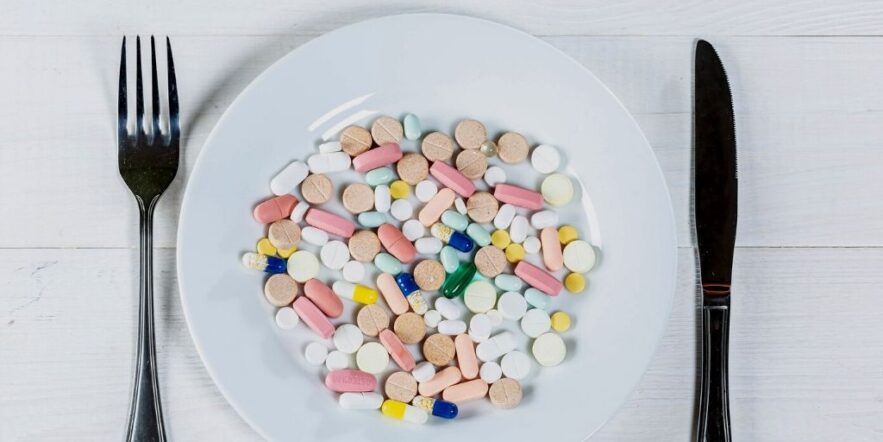Bariatric Surgery
Compared to all other weight loss methods, surgery boasts the highest weight loss success rate. And studies show that obese patients who undergo weight loss (or bariatric) surgery are less likely to die than obese patients who only receive counseling and dietary changes.
Israeli researchers conducted an observational study of more than 33,000 obese people. The rate of death was significantly lower for those who underwent bariatric surgery compared to those who didn’t have the surgery, researchers reported in JAMA. The mortality rate over about 4 ½ years was 1.3% among surgical patients compared with 2.3% among nonsurgical patients.
The results include the three main types of bariatric surgery — laparoscopic banding, Roux-en-Y gastric bypass, or laparoscopic sleeve gastrectomy. A separate study in the same issue of JAMA found that obese adults with type 2 diabetes who underwent gastric bypass surgery continued to show improvements in blood sugar control, blood pressure, and cholesterol, though the improvements appeared to decrease over time.
In a study published in Diabetes Care, losing a single gram of fat from the pancreas following Roux-en-Y gastric bypass was enough to reverse the symptoms of type 2 diabetes. The study followed 18 obese participants with type 2 diabetes both before and after gastric bypass surgery. The surgery helped them to burn off fat in the pancreas, restoring their insulin levels to normal and allowing them to come off their medication.
While more effective than most other weight loss methods, all the surgeries carry a high risk of side effects and serious complications. Early side effects include bleeding, infection, leaking, or diarrhea. Long-term side effects can include anemia, osteoporosis, gallstones, hernias, nausea, and vomiting.
Ideal candidates for surgery have a BMI of 40 or more or 35 or more with serious health complications such as diabetes or heart disease. Besides shrinking the amount of food the stomach can hold, these surgeries seem to work by minimizing calorie absorption and regulating gut bacteria and hunger hormones.
Roux-en-Y gastric bypass, which accounted for about 18% of the 228,000 weight loss surgeries performed in the US 2017, involves creating a small stomach pouch by separating the top of the stomach from the rest of it. Then the small intestine is connected to the stomach pouch, rerouting the digestive tract. On average, 85% of gastric bypass patients lose 60% to 80% of their excess weight and keep at least 50% off for a year.
Obese patients who undergo weight loss (or bariatric) surgery are less likely to die than obese patients who only receive counseling and dietary changes.
Laparoscopic gastric band surgery, sometimes called lap-band surgery, the surgeon makes a few small incisions in the abdomen. Then, long, thin surgical instruments are used to place an inflatable band around the top of the stomach, creating a small stomach pouch, while the rest of the stomach remains below the band. People who have a BMI over 30 along with at least one health problem linked to obesity are usually eligible to undergo gastric band surgery. Studies show gastric band patients lose about 40% to 50% of their excess weight. This type of surgery carries the lowest rate of early postoperative complications, but the highest rate of repeat surgery, which is done to remove or replace all or part of the band.
In a study published in the journal Surgery for Obesity and Related Diseases, researchers in Switzerland reported that after following patients with gastric bands for up to 18 years, 71% had revision or removal surgery, and only 15% of those who kept the band had good or excellent results.
Laparoscopic sleeve gastrectomy, commonly called gastric sleeve, is by far the most popular, accounting for nearly 60% of weight-loss surgeries. This procedure involves removing about 80 percent of the stomach. The small stomach pouch holds much less than the normal stomach, but the procedure seems to affect gut hormones that impact hunger, blood sugar control, and the feeling of fullness after eating.
After Surgery
A study of bariatric surgery patients, published in the journal Surgical Endoscopy, was performed to develop a risk model, called the Bariatric Surgery Index for Complications (BASIC), to classify patients by their risk for postoperative complications. The researchers placed each of the 1,709 study participants in a category based on their preoperative risk factors, such as high blood pressure, high cholesterol, or age 60 or older. The categories were class 1, those with a maximum of one risk factor; class 2, those with two risk factors; and class 3, those with three or more risk factors.
After surgery, complications developed in 13.5% of those in class 1, 21.6% of those in class 2, and 31.4% of those in class 3. About 72.7% of complications were short-term, meaning they developed within 30 days of the surgery. The researchers noted that generally, around 20% of bariatric surgery patients develop short or long-term complications.
While death as a direct result of surgery is rare, some side effects can be serious. For example, a rare condition known as neuroglycopenia can occur a year or more after surgery, resulting in a potentially life-threatening reduction of blood sugar in the central nervous system. (NIPHS) This can cause neurologic symptoms like confusion or even seizures and can require surgery if other management efforts fail.
Non-Surgical Options
Perhaps because no existing weight-loss method is a magic bullet, researchers have gotten creative, though not always with success.
Botox: Some research suggests that injecting Botox (prepared from the bacterial toxin botulinum) into the stomach has the potential to help obese people lose weight. In early animal studies, obese rats injected with Botox cut back on food intake and lost weight, compared to those injected with a placebo. Human studies have had conflicting results. In studies where Botox injections appeared to induce weight loss, researchers suspect that the drug affected appetite, feelings of fullness, stomach emptying, and hormones in the gut.
But some research has shown that although Botox injections appear to delay stomach emptying, study participants who received the injections did not feel full earlier than usual, change their eating habits, or lose weight. And an analysis of studies concluded that overall Botox injections did not lead to greater weight loss than placebo injections. However, there are no serious side effects or complications related to the injections regardless of the technique or dose used, or where it is injected into the stomach, which leads some researchers to believe Botox has the potential to have a large role in the treatment of obesity.
Intragastric Balloon: A method called the intragastric balloon is a device that’s either swallowed or placed in the stomach using an endoscopic procedure, then inflated with a saline solution. The balloons take up space in the stomach so there is less room for food. Three balloons are ingested over a three-month period and left in place for no more than six months. Initially, the biggest risk seemed to be the balloon deflating. However, since the balloon system’s approval in 2015, the FDA has received reports of 12 deaths attributable to the devices, usually due to perforation, and has added new labeling with more information about possible death risk. Studies on the usefulness and safety of balloon therapy continue, but it is still considered a viable treatment for patients who do not respond to medical therapy and who do not qualify for bariatric surgical procedures.
AspireAssist: Another method known as the AspireAssist pump works by sucking about 30% of the food eaten right out of the stomach. Patients wait 20 minutes after eating, then empty their stomach contents into the toilet through a small, handheld device that connects to a skin-port discretely embedded on the outside of the abdomen. Gross? Absolutely. But in a one-year trial of 171 obese patients, which led to the device’s approval by the FDA in 2016, those using AspireAssist lost on average 37% of excess weight, compared to those receiving diet and exercise counseling, who lost on average about 10% of excess body weight. Aspire Bariatrics, the pump’s maker says the most common side effects in trials were abdominal discomfort after the procedure and skin irritation around the skin port. Other less likely risks were infection and ulceration, which can generally be resolved with medication, tube removal, or tube replacement.
Immediately after the device’s approval, experts in the field of eating disorders from 19 organizations urged the FDA to revoke approval of AspireAssist. Their concern, as voiced in a letter to the FDA, is that AspireAssist “is a device that is intended to simulate purging,” which is one of the clinical criteria for bulimia nervosa. “We are shocked that one of the clinical criteria for bulimia nervosa (purging behavior) has actually been turned into a form of medical treatment for obesity,” the letter continued. The experts believe that AspireAssist is dangerous and increases the risk of lifelong, potentially deadly eating disorders, which have the highest mortality rate of any psychiatric illness. (See MedShadow’s A Medical Device That Supports Bulimia for Weight Loss? and MedShadow TV’s Talking About AspireAssist)
Dr. Arrone says less invasive weight loss procedures that carry fewer risks and side effects are coming along but may not be quite as effective as current surgical interventions. He also thinks diet drugs will get better and safer. For example, he’s seeing some residual weight loss in patients treated with medication to manage diabetes. Many of these medications are being considered for use in obesity treatment.
The NIH notes that studies are currently exploring new weight-loss strategies or diet pills:
- combine drugs that affect appetite and those that affect addiction (or craving)
- stimulate gut hormones that reduce appetite
- shrink the blood vessels that feed fat cells in the body, thereby preventing them from growing
- target genes that affect body weight
- change bacteria in the gut to control weigh
More from MedShadow:






